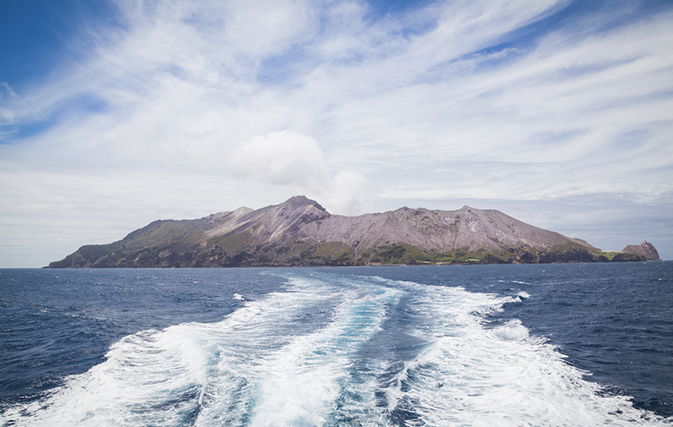WHAKATANE, New Zealand — A volcano on a New Zealand island erupted Monday with a towering blast of ash and scalding steam as tourists were exploring the moon-like surface, killing five people and leaving perhaps two dozen others missing.
Police said the site was still too dangerous hours later for rescuers to search for the missing.
“My god,” Michael Schade tweeted as he posted video of the eruption. “My family and I had gotten off it 20 minutes before, were waiting at our boat about to leave when we saw it. Boat ride home tending to people our boat rescued was indescribable.”
His video showed a wall of ash and steam around White Island and a helicopter badly damaged and covered in ash. He said one woman was badly injured but seemed “strong” by the end.
The terrifying disaster immediately raised questions of why people were allowed to visit the island some 30 miles (50 kilometres) off mainland New Zealand after scientists had noted an uptick in volcanic activity in recent weeks.
Police Deputy Commissioner John Tims said the number of missing was in the double digits but he couldn’t confirm an exact number. Fewer than 50 people were on the island when it erupted, and 23 had been taken off, including the five dead, he said. Tims said there had been no contact with any of the missing.
He said New Zealanders and foreign tourists were among the dead, missing or injured. Most of the 18 who survived were injured, some suffering severe burns, he said.
Some of the visitors were passengers from the Royal Caribbean cruise ship Ovation of the Seas.
“We will offer all possible assistance to our guests and local authorities. Please keep all those affected in your prayers,” the cruise line said.
The ship had left Sydney last week and had been scheduled to sail to the New Zealand capital of Wellington on Monday night, but Royal Caribbean said it would instead remain in port on neighbouring North Island until more was learned about the situation.
The eruption sent a plume of steam and ash about 12,000 feet (3,660 metres) into the air.
The GeoNet agency, which monitors volcanoes and earthquakes in New Zealand, had raised the alert level on White Island on Nov. 18 from 1 to 2, on a scale where 5 represents a major eruption, noting an increase in sulfur dioxide gas, which originates from magma deep in the volcano. It also said at the time that over the previous weeks, volcanic tremors had increased from weak to moderate strength.
Prime Minister Jacinda Ardern, who travelled to the region, said the focus remained on the search-and-rescue mission for now and questions about whether tourists should be visiting would be addressed later.
Brad Scott, a volcanologist with research group GNS Science, said the alert level was often raised and then later dropped again without any eruption. He said there hadn’t been any major incidents with tourists visiting the island in the past, though there had been some close calls.
Scott said it was not for him to say whether the island was safe enough to host tourists immediately before Monday’s eruption.
After the disaster, GeoNet raised its alert level to 4, later dropping it to 3.
“In the scheme of things, for volcanic eruptions, it is not large,” said Ken Gledhill from GeoNet. “But if you were close to that, it is not good.”
White Island is New Zealand’s most active cone volcano. About 70% of the volcano lies under the sea.
Twelve people were killed on the island in 1914 when it was being mined for sulfur. Part of a crater wall collapsed and a landslide destroyed the miners’ village and the mine itself.
The remains of buildings from another mining enterprise in the 1920s are now a tourist attraction. The island became a private scenic reserve in 1953, and daily tours allow more than 10,000 people to visit every year.
The island is also known by the indigenous Maori name Whakaari.
